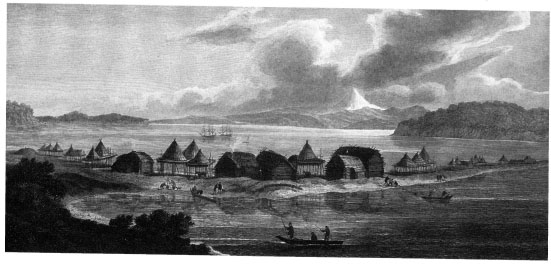Russia (27 page)
Authors: Philip Longworth

In this document an alliance with Habsburg Austria against the Turks was advised in order to ‘facilitate Russia’s expansion to Constantinople’, and, while the Habsburgs were being sapped of strength by war in the Balkans, their German neighbours were to be stirred up against them. To this end and others, Russia should ‘contract marriage alliances in Germany in order to gain influence there’, and use every opportunity to become involved in the quarrels of Germany and indeed of all Europe. ‘Encourage anarchy in Poland with the object of subjugating it,’ and ‘use religious dissent to disrupt Poland and Turkey’
Commercial imperialism was central to the plan. The English should be courted and brought into a ‘close commercial alliance’, because it was through them that Russia could acquire the necessary commercial and naval skills to acquire a world empire. Outside Europe the objective should be the Levant, because by controlling the eastern Mediterranean Russia could monopolize ‘the commerce of the Indies and thus become the true sovereign of Europe’.
The final step would be to make secret proposals to both Habsburg Austria and Bourbon France, offering each a half share, with Russia, in the domination of the world, while getting them embroiled in an exhausting war with each other. Then, at an appropriate moment, Russia would join Austria and march its troops to the Rhine. At the same time two large fleets would sail from Archangel and Azov and head for the Mediterranean, there to disgorge swarms of ‘nomadic and greedy’ Asiatic peoples who would overrun Italy, Spain and France, carry off much of the population to settle in Siberia, and subjugate the remainder.
29
As we have seen, several strategies recommended in the document had already been implemented by Peter. Others were to become evident in Russian policies later in the eighteenth century All this gives the testament the ring of truth. Yet it is spurious. Its vision of a European Armageddon is imaginative rather than practical, and the mindset that created the document is quite un-Russian. Indeed, the document turns out to have been composed later in the century, using ideas deriving from Ukrainian exiles, Poles, Hungarians and Turks, probably by the notorious diplomat the Chevalier d’Eon. Its purpose was to arouse fear of Russian expansionism in Europe, and France had ample motive to use it.
France was in a state of accelerating decline since the grand reign of Louis XIV. It had been Sweden’s ally and had seen it defeated. It had worked closely with the Turks, but feared their powers were waning. It was Britain’s rival at sea, but increasingly apprehensive of its competitiveness, especially since Britain had drawn close to Austria, France’s rival on land. And now upstart Russia was empire-building at a dangerous rate. Just as Polish diplomats and German publicists had whipped up fear of Ivan the Terrible’s Russia, so France now encouraged fears of an insatiable Russia swallowing all Europe. It contributed to the pervasive fears of later ages too. The growth of an empire reflects power; it may bring wealth, and it certainly attracts enemies.
Glorious Expansion
I
T HAS BEEN
argued that empires, like companies, must grow or die, that an expanding empire generates costs that can only be met with more resources, and that these resources can only be found by further conquests.
1
The principle may only apply to continental empires based on agriculture, like that of the Aztecs of Mexico, the Incas of Peru or the empire of Kievan Rus - though China seems to be a doubtful case - but the second Russian Empire seems to conform to it. Governments have a chronic disposition to outspend their incomes, of course, but Russia’s financial plight after Peter’s death (to the extent that it can be established from the record) seems to have been serious. As the British minister to the Russian court, Claudius Rondeau, remarked in 1730, with only a little exaggeration, ‘They have not a shilling in the treasury, and, of course, nobody is paid.’
2
Certainly the decades that followed Peter’s death were to see brilliant advances on almost every front. Russia’s armies and fleets were to win astonishing victories over militaristic Prussia in the Seven Years War and over the underestimated Ottoman Turks in two subsequent wars. Russia was to prevail in yet another war with Sweden, and, besides fighting a series of lesser engagements with steppe nomads, Persia and wild tribes of the Caucasus, was to be largely instrumental in sweeping the armies of revolutionary France out of northern Italy in 1799. Russia’s generals and admirals were showered with gem-encrusted orders, diamond-studded swords, and exquisite gold or enamel snuffboxes by their generous mon-archs as tokens of their appreciation — and, not surprisingly, because they had made huge strategic gains for the Empire.
By 1800 Poland was erased from the map of Europe, the greatest part of it swallowed by her age-long antagonist, and Russia had also pushed out her frontiers in Central Asia, acquired a bridgehead in North America, taken the Crimea, established itself on the Danube estuary, and become a power in the Mediterranean as well as the Black Sea, the Baltic and the Pacific.
And, despite Peter’s efforts, all this was accomplished by a state which was regarded as institutionally ramshackle as well as financially weak. As Edward Finch, Britain’s envoy in St Petersburg, reported in 1741,
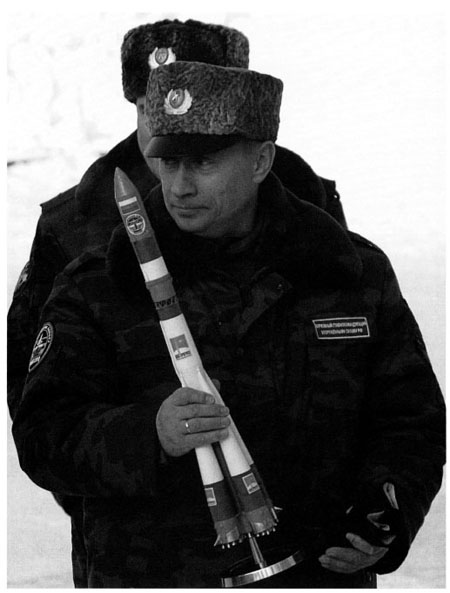
Not to be trifled with: President Putin in uniform brandishing a model of the
Molnia
spacecraft

Completing the furnaces for the Soviet Union’s largest steel plant at Magnitogorsk (early 1930s). Photograph from W. Chamberlin,
Russia’s Iron Age
(London, 1935)
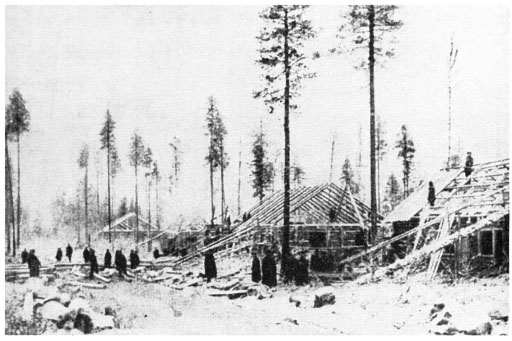
Barracks for Gulag prisoners cutting the White Sea-Baltic Canal, 1933. Photograph from W. Chamberlin,
Russia’s Iron Age
(London, 1935)
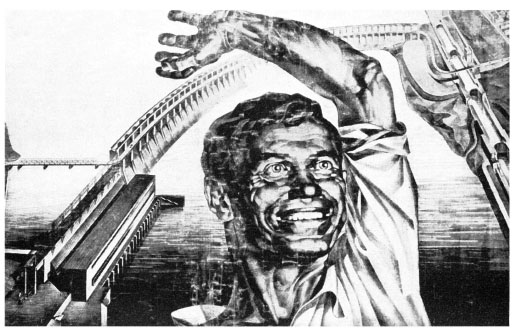
Poster celebrating the completion of the Dnieper Dam (early 1930s). From W. Chamberlin,
Russia’s Iron Age
(London, 1935)
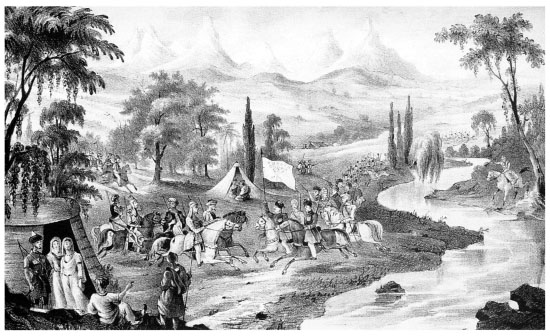
Circassian princes arriving for a conference, 1836. Stone lithograph from E. Spencer,
Travels in Circassia, Krim Tartary
(London, 1837)
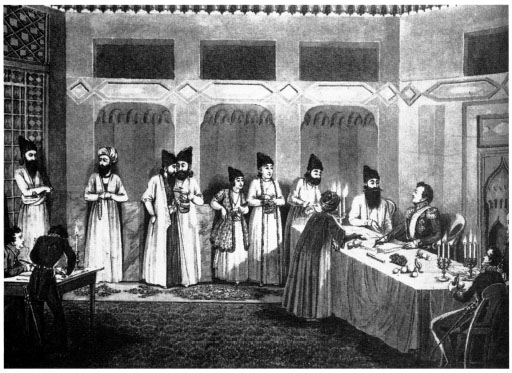
Imperial diplomacy: Persians paying Russian representatives an indemnity in bullion under the terms of the Treaty of Turkmanchai, 1828. Engraving by K. Beggrov, after V.I. Moshkov
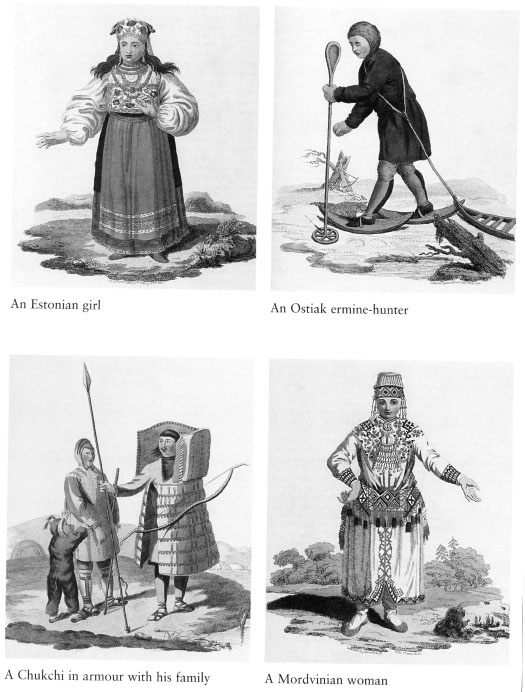
Engravings from W. Miller,
Costume of the Russian Empire
(London, 1803)
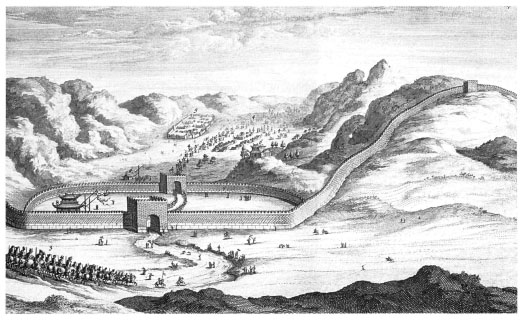
A Russian embassy approaches the Great Wall of China, 1693. From E. Ysbrants Ides,
Three Years Travels from Moscow Over-land to China
(London, 1706)
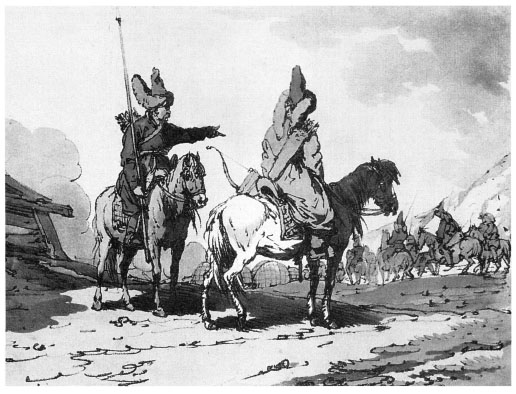
Bashkirs. Soft-ground etching from John Atkinson and James Walker,
A Picturesque Representation of the Manners, Customs and Amusements of the Russians
(London, 1803)
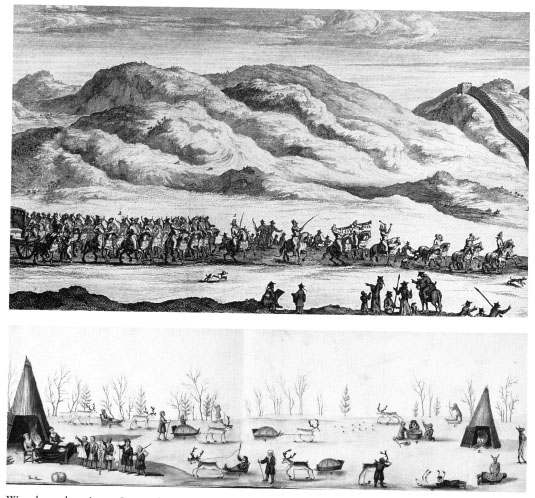
Woodcut showing a Lapp shaman’s view of the world
